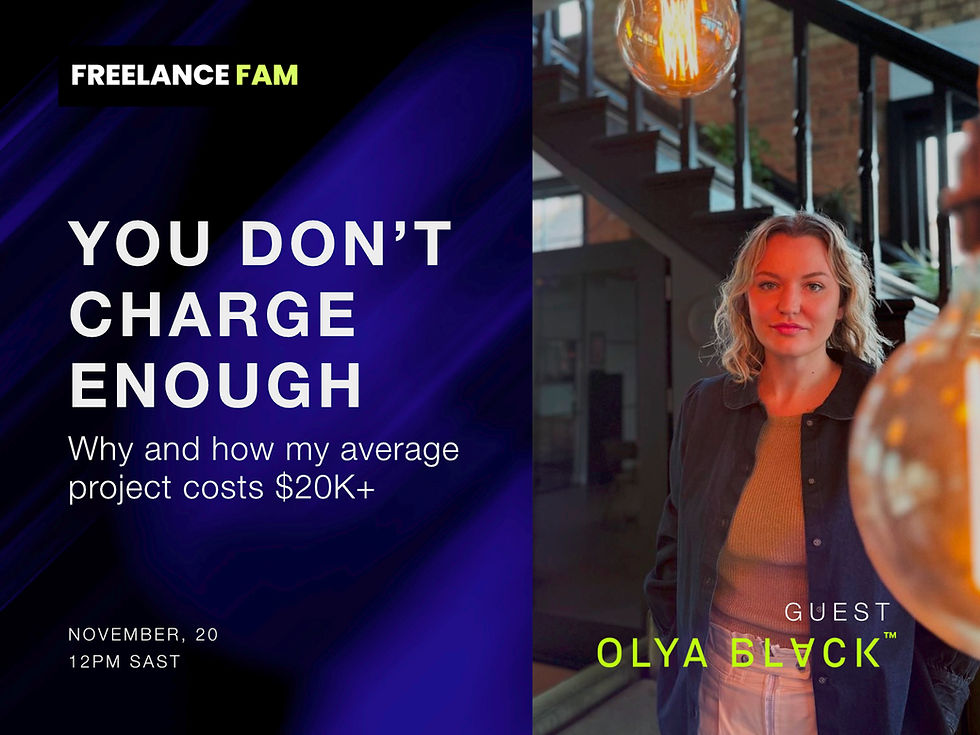Why Web Design Prices Vary So Much
- Olya Black
- Mar 28
- 2 min read
Updated: 7 days ago
I recently joined a workshop for web designers and was blown away (not in a good way) by the advice being thrown around: If you want to earn more, just change your mindset and target higher-paying clients.
Really? Is it that simple?
While there’s some truth to that, it’s an oversimplification that ignores the real driver of growth—actual skill, experience, and the value you bring to your clients.
From $300 to $30,000—Here’s What Actually Changed
I know this firsthand. When I started, I charged $300 for a website (no jokes). At the time, that felt fair—I was still learning, still figuring things out. And that was 15 years ago, prices were different, and so was my level of experience.
I gradually raised my prices to $3,000. Not because I suddenly "thought bigger" or magically attracted wealthier clients, but because I figured out how much is actually involved in building a great website—from understanding business goals and mapping out user journeys, to setting up a library of styles, structuring content, sourcing visuals, and optimising for both search engines and conversions. I never used templates—I was creating custom solutions that actually moved the needle for my clients. That shift in depth and responsibility naturally demanded a higher price. I knew with confidence that I was offering more strategic, impactful work.
Now, with branding strategy as part of the process, the value—and the price—has increased significantly. We’re no longer just building websites; we’re crafting a cohesive brand experience from the ground up. That means brand strategy, visual identity, messaging, and a digital presence that’s aligned across every touchpoint. It positions our clients more confidently in their market, gives their audience something to connect with, and sets the foundation for long-term growth. The work is deeper, more intentional—and the results are even more transformative.
Yes, mindset matters. Confidence in your worth helps set better prices. But confidence without substance is just wishful thinking. If a designer (or an agency) stuck at a low price point, the answer isn’t just “charge more.” It’s bring more value.
Instead of asking, How can we charge more?, ask:
How can I create bigger, longer-lasting results for my clients?
What gaps in my process or skillset need improving?
How can I make my work so good that my pricing becomes a no-brainer?
That’s how we grow, on both personal and business level. And that’s how we build a reputation that speaks louder than any sales pitch.
So no, it’s not just about mindset. Pricing isn’t plucked from thin air—it’s earned through the the strength of the refined process and the impact of the results we bring on the table.
In a time when AI is making it easier to churn out faster, cheaper options, our clients are still willing to invest more—because they know we bring what automation can’t: strategic thinking, human insight, and creative guidance that actually moves the needle.
We’re not just here to build—we’re here to lead, solve real problems, and unlock meaningful growth. That trust is earned through our reputation and the outcomes we consistently bring to the table.

































